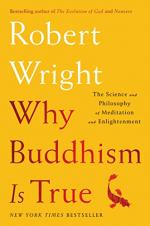
|
| Name: _________________________ | Period: ___________________ |
This quiz consists of 5 multiple choice and 5 short answer questions through Chapters 10-12.
Multiple Choice Questions
1. The author introduces what concept in order to urge the reader to find more happiness in his or her own life?
(a) Serenity.
(b) Aesthetic beauty.
(c) Formlessness.
(d) Emptiness.
2. What is the one thing that the author says natural selection "cares about" (3)?
(a) Sustenance.
(b) Evolution.
(c) Procreation.
(d) Survival.
3. The dorsolateral prefrontal cortex is described as the seat of what?
(a) The ego.
(b) Abstract reasoning.
(c) Emotions.
(d) Paranoia.
4. The author states that he suspects that our recognition of familiar people, pets, and even objects within our lives is based on what?
(a) Survival tactics.
(b) Our ideas about them.
(c) Competitive feelings.
(d) Our feelings about them.
5. What adjective does the author apply to the phenomenon of road rage?
(a) Silly.
(b) Logical.
(c) False.
(d) Crazy.
Short Answer Questions
1. In what year did the author of the book What the Buddah Taught write the work?
2. Which philosopher compared the relationship between feelings and the rational self to the relationship between horses and a charioteer?
3. How many minutes does the author say he spends meditating each morning?
4. What does the lizard represent at the meditation retreat attended by the author?
5. Chapter 10 is entitled "Encounters With the" what?
|
This section contains 195 words (approx. 1 page at 300 words per page) |

|




